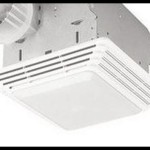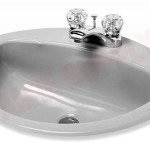How To Take A Tap Off a Bathroom Sink: A Comprehensive Guide
Removing a tap from a bathroom sink, while seemingly daunting, is a task readily achievable with the correct tools, preparation, and a methodical approach. This article provides a comprehensive guide to safely and effectively removing a bathroom tap, covering essential preparations, step-by-step instructions, and crucial troubleshooting tips to ensure a successful outcome.
1. Preparation and Safety Measures
Before any physical work begins, meticulous preparation is paramount. This encompasses gathering the necessary tools, ensuring personal safety, and isolating the water supply to prevent potential flooding. A well-prepared workspace minimizes the risk of errors and ensures a smoother removal process.
The first step in the preparation process is identifying and gathering the appropriate tools. The specific tools required may vary slightly depending on the type of tap and the installation method, but the following is a general list of essential items:
*Adjustable wrench: This is essential for loosening and tightening nuts and bolts of various sizes.
*Basin wrench (also known as a tap wrench): This specialized tool is designed to reach and grip nuts located in tight spaces beneath the sink.
*Pliers: Useful for gripping and manipulating smaller parts, particularly hoses and connectors.
*Screwdrivers (Phillips and flathead): Required for removing screws that may be securing the tap in place.
*Penetrating oil: To loosen any corroded or stuck fittings.
*Old towels or cloths: To protect the sink surface and absorb any water spills.
*Bucket or container: To catch any residual water in the pipes.
*Work light: Good lighting is essential for visibility, especially in the confined space under the sink.
*Safety glasses: To protect your eyes from debris.
*Gloves: To protect your hands and provide a better grip.
Once the tools are assembled, personal safety should be prioritized. This primarily involves wearing safety glasses to shield the eyes from any potential debris that may fall while working under the sink. It is also advisable to wear gloves to protect your hands from dirt, grime, and sharp edges.
The most crucial safety measure involves isolating the water supply to the tap. This prevents water from flowing uncontrollably once the tap is disconnected. Locate the shut-off valves for both the hot and cold water supply lines. These valves are typically located under the sink, close to the water pipes. Turn both valves clockwise until they are fully closed. To verify that the water supply is completely shut off, turn on both the hot and cold taps. If no water flows, the isolation is successful. If water continues to flow, re-check the shut-off valves and ensure they are fully closed. In the event that the local shut-off valves are faulty or inaccessible, it may be necessary to shut off the main water supply to the entire property. This valve is usually located near the water meter.
Finally, before proceeding, protect the sink surface with old towels or cloths. This will not only prevent scratches and damage to the sink but also act as an absorbent material to catch any water spills that may occur during the removal process.
2. Disconnecting the Water Supply and Drain Connections
After ensuring the water supply is isolated and the work area is prepared, the next step involves disconnecting the water supply lines and any drain connections attached to the tap. This process requires careful attention to detail to avoid damaging the pipes or causing leaks.
Begin by placing a bucket or container under the water supply connections to catch any residual water that may be trapped in the pipes. Using an adjustable wrench, carefully loosen the nuts connecting the water supply lines to the tap. These lines are typically flexible hoses or copper pipes. Turn the wrench counterclockwise to loosen the nuts. Once the nuts are loosened, carefully detach the water supply lines from the tap. Be prepared for a small amount of water to spill out, even after the shut-off valves have been closed. Use the towels or cloths to absorb any spills promptly.
If the tap is connected to the drain assembly, this connection must also be disconnected. The drain connection may vary depending on the type of drain system installed. Some taps may have a connecting rod that operates the drain stopper. This rod typically connects to a pivot rod located on the drain assembly. Disconnect the connecting rod from the pivot rod by loosening the small screw that secures it. Once the connecting rod is disconnected, the tap should be free from the drain assembly.
Before proceeding further, inspect the disconnected water supply lines and drain connections for any signs of corrosion or damage. If any damage is present, it may be necessary to replace the lines or connections to ensure a leak-proof installation when the new tap is installed.
3. Removing the Tap from the Sink
With the water supply and drain connections disconnected, the final step involves physically removing the tap from the sink. This typically involves loosening and removing the nuts or mounting brackets that secure the tap to the sink.
Locate the nuts or mounting brackets that are securing the tap to the underside of the sink. These are typically located in a confined space, making access difficult. This is where a basin wrench proves to be invaluable. A basin wrench is designed with a long handle and a swiveling jaw that can grip nuts in tight spaces. Position the jaw of the basin wrench around the nut and tighten the jaw until it grips the nut securely. Turn the wrench counterclockwise to loosen the nut. If the nut is corroded or stuck, apply penetrating oil and allow it to soak for a few minutes before attempting to loosen the nut again.
Continue loosening the nuts until they are completely removed. There may be multiple nuts or mounting brackets securing the tap in place, so ensure that all of them are removed before attempting to lift the tap. As the nuts are removed, support the tap from above to prevent it from falling and potentially damaging the sink.
Once all the nuts or mounting brackets have been removed, carefully lift the tap from the sink. If the tap is stuck or difficult to remove, gently wiggle it back and forth to loosen any remaining residue or sealant. Exercise caution to avoid damaging the sink or the tap itself.
After the tap has been removed, clean the area around the tap hole on the sink. Remove any old sealant or residue that may be present. This will ensure a clean surface for the new tap to be installed. Inspect the sink for any cracks or damage around the tap hole. If any damage is present, it may be necessary to repair the sink before installing the new tap.
4. Troubleshooting Common Problems
While the tap removal process is generally straightforward, several common problems can arise. Addressing these issues effectively can prevent delays and ensure a successful outcome.
Corroded or Stuck Nuts: This is a frequent issue, especially in older installations. The prolonged exposure to moisture and minerals can cause the nuts to seize. Spraying penetrating oil liberally and allowing it to soak for an extended period is often effective. If the nut remains stubborn, carefully apply heat using a heat gun to expand the metal slightly. Avoid using a torch, as this can damage the pipes and surrounding materials. If all else fails, a nut splitter may be required to break the nut apart.
Difficult Access: The confined space under the sink can make it challenging to access the nuts securing the tap. A basin wrench is specifically designed for this purpose, but even with this tool, maneuvering can be tricky. Using a work light to improve visibility is crucial. Consider using mirrors to get a better view of the nuts. Taking breaks and repositioning oneself can also help to avoid fatigue and frustration.
Damaged Water Supply Lines: If the water supply lines are corroded or damaged, they may leak when disconnected. It's recommended to replace these lines proactively when replacing the tap to ensure a leak-free installation. Before reconnecting the new tap, inspect the threads on the supply lines and the tap connectors. Clean any debris and apply Teflon tape to ensure a tight seal.
Stripped Screws: When disconnecting the drain assembly, the screws holding the connecting rod may be stripped. Apply pressure to the screwdriver and turn slowly. If the screw is severely stripped, use a rubber band or steel wool between the screwdriver and the screw head for added grip. A screw extractor can also be used to remove the stripped screw.
5. Post-Removal Considerations
Once the old tap is removed, several steps should be taken before installing the new one. These steps ensure a smooth installation process and prevent future problems.
Clean the Sink Area: Thoroughly clean the sink surface around the tap hole. Remove any old sealant, grime, or debris. A clean surface ensures a good seal for the new tap and prevents water from leaking around the base. Use a mild cleaning solution and a non-abrasive cloth to avoid scratching the sink's surface.
Inspect the Drain Assembly: While the tap is removed, inspect the drain assembly for any signs of wear, corrosion, or damage. This is an opportune time to replace the drain assembly if necessary. A new drain assembly ensures proper drainage and prevents leaks. Clean the existing drain assembly thoroughly and lubricate any moving parts.
Prepare the New Tap: Before installing the new tap, familiarize yourself with the manufacturer's instructions. Ensure that all necessary parts are included and that you understand the installation process. Apply plumber's tape to the threads of the water supply connections to ensure a watertight seal. Test the new tap's functionality before fully securing it to the sink.
Disposal of the Old Tap: Dispose of the old tap responsibly. Metal taps can often be recycled at local recycling centers. Contact your local waste management department for information on proper disposal methods. Avoid simply discarding the old tap in the regular trash, as this can contribute to environmental pollution.
By following these detailed instructions and taking the necessary precautions, removing a tap from a bathroom sink can be a manageable task. Careful preparation, a methodical approach, and attention to detail are key to a successful outcome.

How To Easily Replace Basin Taps Step By

How To Change Or Replace Single Bathroom Basin Tap

How To Turn Off The Water Under Your Sink Checkatrade

How To Replace Bathroom Taps Big
How To Change Bathroom Taps Everything You Need Know

How To Replace A Tap Washer

How To Replace A Bathroom Faucet Cardinal Home Center Central Virginia Building Supply

How To Turn Off The Water Under Your Sink Checkatrade

How To Turn Off Water Supply A Sink

How To Change A Washer On Mixer Tap Living By Homeserve
Related Posts







